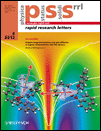
Physica Status Solidi-Rapid Research Letters
Scope & Guideline
Fostering Rapid Advancements in Materials Science
Introduction
Aims and Scopes
- Solid-State Physics and Materials Science:
The journal primarily publishes research on solid-state physics, encompassing both theoretical and experimental studies that explore the properties, behaviors, and applications of solid materials. - Nanostructured Materials:
There is a significant emphasis on nanostructured materials, including their synthesis, characterization, and potential applications, particularly in electronics, photonics, and energy conversion. - Functional Materials and Devices:
Research on functional materials, such as semiconductors, ferroelectrics, and phase-change materials, is central to the journal. This includes studies on their electronic, optical, and thermal properties. - Interfacial Phenomena:
The journal often features studies that investigate interfacial phenomena in materials, which are crucial for the performance of various devices like transistors, solar cells, and memory devices. - Emerging Technologies and Applications:
Physica Status Solidi-Rapid Research Letters highlights advancements in emerging technologies, including neuromorphic computing, quantum devices, and advanced photonic systems.
Trending and Emerging
- 2D Materials and Heterostructures:
Research on two-dimensional materials, including graphene and transition metal dichalcogenides, and their heterostructures has surged, driven by their unique properties and potential applications in electronics and optoelectronics. - Quantum Materials and Topological Phenomena:
There is a growing focus on quantum materials and topological insulators, exploring their unique electronic properties and potential applications in quantum computing and spintronics. - Advanced Energy Storage and Conversion:
Publications related to advanced energy storage technologies, such as batteries and supercapacitors, as well as novel materials for energy conversion, including photovoltaics and thermoelectrics, are on the rise. - Neuromorphic Computing and Memristive Devices:
The development of neuromorphic computing systems and memristive devices is increasingly prominent, reflecting interest in bio-inspired computing architectures. - Hybrid and Composite Materials:
Research on hybrid and composite materials, particularly those combining organic and inorganic components for enhanced functionality, is gaining traction.
Declining or Waning
- Traditional Semiconductor Physics:
Research focused on traditional semiconductor physics, such as bulk semiconductor properties, has decreased as the field shifts towards more novel materials and nanoscale phenomena. - Conventional Photovoltaics:
Publications related to conventional photovoltaic technologies have waned, likely due to a growing interest in advanced materials like perovskites and organic photovoltaics. - Static Material Properties:
Studies that emphasize static properties of materials without considering dynamic interactions or applications have become less frequent, as there is a trend towards more application-driven research. - Classical Ferroelectrics:
Research on classical ferroelectric materials is becoming less prominent compared to newer ferroelectric materials and their integration into advanced devices. - Single-Component Systems:
There is a decline in studies focusing on single-component systems, as the research community increasingly explores hybrid structures and composite materials.
Similar Journals
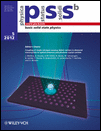
PHYSICA STATUS SOLIDI B-BASIC SOLID STATE PHYSICS
Illuminating Innovations in Basic Solid State ResearchPHYSICA STATUS SOLIDI B-BASIC SOLID STATE PHYSICS, published by Wiley-VCH Verlag GmbH in Germany, is an esteemed journal within the condensed matter physics sphere, covering pivotal advancements in basic solid state physics. With a rich history dating back to 1961, it serves as a scholarly platform for researchers, professionals, and students alike, providing insights into the fundamental properties and applications of electronic, optical, and magnetic materials. The journal currently holds a respectable Q3 ranking in both Condensed Matter Physics and Electronic, Optical, and Magnetic Materials as of 2023, indicating its impactful contributions to these fields despite its competitive landscape. While it does not offer open access, its comprehensive research findings are critical for those engaged in innovative material science research. With a convergence period extending to 2024, PHYSICA STATUS SOLIDI B continues to play a significant role in facilitating knowledge exchange and fostering advancements in solid state physics.
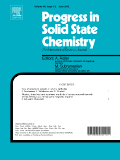
PROGRESS IN SOLID STATE CHEMISTRY
Pioneering Insights in Condensed Matter PhysicsPROGRESS IN SOLID STATE CHEMISTRY, published by PERGAMON-ELSEVIER SCIENCE LTD, serves as a pivotal platform for disseminating cutting-edge research and advancements in the field of solid state chemistry. With an impressive impact factor and a respected status, this journal consistently ranks in the Q1 category across multiple disciplines, including Condensed Matter Physics, Materials Science, and Physical and Theoretical Chemistry. Following a rigorous peer-review process, it features articles that explore theoretical frameworks and experimental findings, thereby fostering innovation and collaboration among researchers and professionals. Although it does not adopt an open access model, its substantial reach and high Scopus rankings—19th in Condensed Matter Physics, 14th in Physical and Theoretical Chemistry, and 48th in General Materials Science—underscore its influence in shaping the future of materials research. Established in 1964, the journal continues to contribute significantly to the academic community, bridging the gap between theory and practical application in solid state materials.
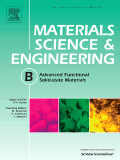
Materials Science and Engineering B-Advanced Functional Solid-State Materials
Connecting Scholars to the Cutting Edge of Materials ScienceMaterials Science and Engineering B: Advanced Functional Solid-State Materials, published by Elsevier, stands as a pivotal platform in the realm of materials science, focusing on the development and characterization of advanced solid-state materials. With an ISSN of 0921-5107 and E-ISSN of 1873-4944, this journal operates out of the United Kingdom and addresses critical issues in condensed matter physics, mechanical engineering, and mechanics of materials. Its consistent recognition, evident in its Q2 quartile rankings across multiple engineering and physics categories and a respectable scope of convergence from 1988 to 2024, signifies its substantial contribution to the field. Researchers and professionals seeking a venue for cutting-edge work will appreciate the journal's commitment to advancing knowledge in functional materials, with its open access features ensuring that innovative findings are readily accessible. Join a community of leading scholars engaging with the latest advancements, shaping the future of materials science.

JOURNAL OF ELECTRONIC MATERIALS
Exploring Innovations in Materials Science Since 1972Welcome to the Journal of Electronic Materials, a premier publication in the field of materials science. Published by Springer, this esteemed journal has been a beacon for groundbreaking research in electronic, optical, and magnetic materials since its inception in 1972. As an established resource, it boasts a commendable impact factor and categorically ranks in the second quartile (Q2) in key areas such as Condensed Matter Physics and Electrical and Electronic Engineering, as well as holding a respectable third quartile ranking in fields related to Electronic, Optical, and Magnetic Materials and Materials Chemistry. Researchers, professionals, and students can access a wealth of knowledge as we publish original articles, reviews, and cutting-edge research that push the boundaries of science and technology in these critical fields. Stay informed and engaged as we explore advancements that shape the future of electronic materials.
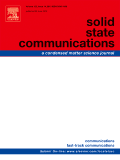
SOLID STATE COMMUNICATIONS
Bridging Research and Application in Solid-State MaterialsSOLID STATE COMMUNICATIONS is a prestigious journal published by Pergamon-Elsevier Science Ltd, dedicated to disseminating cutting-edge research in the fields of Chemistry, Condensed Matter Physics, and Materials Chemistry. With an ISSN of 0038-1098 and an E-ISSN of 1879-2766, the journal has established itself as a vital resource for researchers and professionals seeking to explore the fundamental properties and innovative applications of solid-state materials. As of 2023, it boasts a commendable standing, ranking in the Q2 quartile across its various categories, reflecting its impactful contributions to the scientific community. The journal is indexed in Scopus, further validating its relevance and quality, with notable ranks close to the median percentile in key areas. While SOLID STATE COMMUNICATIONS does not currently offer Open Access options, it remains a highly regarded source for rigorous scientific inquiry and open discussions, with a publication history dating back to 1963 and continuing to 2024. The journal serves as an essential platform for disseminating groundbreaking findings and fostering collaboration within the vibrant fields of solid state science.

Physics and Chemistry of Solid State
Connecting Researchers to Shape the Future of Solid-State StudiesPhysics and Chemistry of Solid State is a distinguished open access journal published by Vasyl Stefanyk Precarpathian National University in Ukraine, dedicated to advancing research in the fields of condensed matter physics, materials science, and physical and theoretical chemistry. Since its inception in 2000, the journal has provided a platform for the dissemination of innovative ideas and original research findings, contributing significantly to the global scientific community. With a variety of access options, it facilitates the sharing of knowledge and collaboration among researchers worldwide. The journal has garnered recognition with respectable rankings in Scopus, positioning itself among the significant publications in its domain, particularly noted for its contributions to materials science and condensed matter physics. As it moves through its converged years from 2018 to 2024, Physics and Chemistry of Solid State aims to foster interdisciplinary dialogue and prepare the next generation of scientists to tackle complex challenges in solid-state research.

JOURNAL OF THE CERAMIC SOCIETY OF JAPAN
Pioneering research at the intersection of art and science.Journal of the Ceramic Society of Japan is a prominent peer-reviewed journal dedicated to advancing the field of ceramics and composites. Published by Ceramic Society Japan - Nippon Seramikksu Kyokai, this journal serves as a critical platform for innovative research and development within the realms of materials science and condensed matter physics. Established in 1988, it converges a rich history of contributions and anticipates further advancements through 2024. With an emphasis on interdisciplinary research, the journal ranks in the third quartile in multiple categories, including Ceramics and Composites and Materials Chemistry, promising valuable insights for academics and industry professionals alike. Despite its robust academic standing, the journal currently operates without open access, reflecting the challenges of disseminating specialized research in today's competitive landscape. Whether you are a seasoned researcher or an aspiring student, Journal of the Ceramic Society of Japan offers essential resources that can enhance your understanding and foster innovation in ceramic materials.

JETP LETTERS
Catalyzing Discoveries for the Next Generation of ScientistsJETP LETTERS, published by MAIK NAUKA/INTERPERIODICA/SPRINGER, is a prestigious journal in the field of physics and astronomy, which plays a pivotal role in disseminating groundbreaking research and innovative ideas since its inception in 1969. With an ISSN of 0021-3640 and an E-ISSN of 1090-6487, this journal aligns well with the interests of both seasoned researchers and emerging scholars, having achieved a 2023 category rank of Q3 for miscellaneous topics within physics and astronomy. Located in the United States at 233 SPRING ST, NEW YORK, NY 10013-1578, JETP LETTERS serves as a critical resource for its readership, offering exclusive insights and advancements across diverse areas of physics. While not open access, it hosts a collection of articles that refine theoretical approaches and experimental methods, providing both knowledge and inspiration to professionals and academics seeking to make impactful contributions to the scientific community. The journal’s quality is reflected in its Scopus ranking, where it stands at 39 out of 81 in the multidisciplinary category, placing it in the 52nd percentile, thus underscoring its significance and reliability as a scholarly outlet.

ACTA PHYSICA SINICA
Advancing the Frontiers of Physics and AstronomyACTA PHYSICA SINICA is a prominent journal published by the Chinese Physical Society, dedicated to the dissemination of groundbreaking research in the field of physics and astronomy. Established in 1993, this journal has consistently contributed to the scientific community by publishing high-quality articles that cover a wide range of topics within general physics and related disciplines. Although currently classified in Q4 of the physics and astronomy category by Scopus, ACTA PHYSICA SINICA plays an important role in fostering collaboration and communication among researchers in China and around the world. With a substantial readership, this journal is poised to remain a valuable resource for professionals, researchers, and students alike. By providing in-depth analysis and insights, it aims to advance the understanding and application of physical principles in various technological and scientific advancements. The journal is accessible via subscription, ensuring that contributors and readers can engage with the evolving landscape of physics research. For more information, visit the publisher's website.
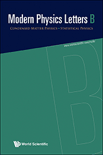
MODERN PHYSICS LETTERS B
Connecting scholars through groundbreaking physics discoveries.MODERN PHYSICS LETTERS B, published by World Scientific Publishing Co Pte Ltd, is a pivotal journal in the fields of Condensed Matter Physics and Statistical and Nonlinear Physics. With an ISSN of 0217-9849 and an E-ISSN of 1793-6640, this journal has been a prominent platform for innovative physics research since its inception in 1996, catering to a global audience of researchers, professionals, and students alike. Its impact is reflected in its Scopus rankings, with a commendable position in the 65th percentile for Statistical and Nonlinear Physics and the 54th percentile for Condensed Matter Physics. Despite its classification in the Q3 quartile, MODERN PHYSICS LETTERS B is dedicated to advancing knowledge through rapid dissemination of high-quality research, thus playing a critical role in shaping future developments in its disciplines. Published in Singapore, the journal encourages contributions that address contemporary challenges and breakthroughs in physics, fostering an engaged scholarly community.